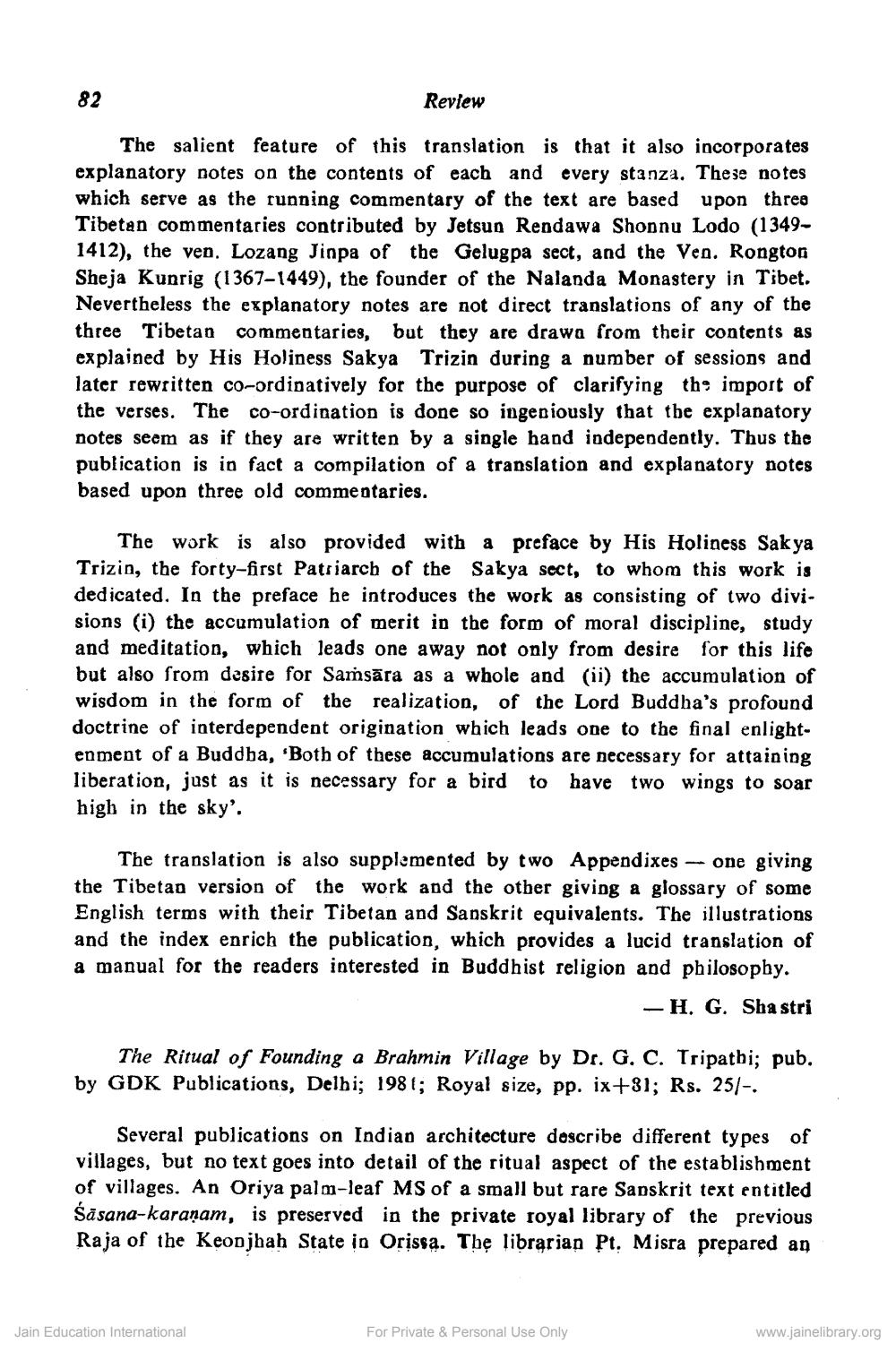________________
82
Review
The salient feature of this translation is that it also incorporates explanatory notes on the contents of each and every stanza. These notes which serve as the running commentary of the text are based upon thres Tibetan commentaries contributed by Jetsun Rendawa Shonnu Lodo (13491412), the ven. Lozang Jinpa of the Gelugpa sect, and the Ven. Rongton Sheja Kunrig (1367-1449), the founder of the Nalanda Monastery in Tibet. Nevertheless the explanatory notes are not direct translations of any of the three Tibetan commentaries, but they are drawn from their contents as explained by His Holiness Sakya Trizin during a number of sessions and later rewritten co-ordinatively for the purpose of clarifying the import of the verses. The co-ordination is done so ingeniously that the explanatory notes seem as if they are written by a single hand independently. Thus the publication is in fact a compilation of a translation and explanatory notes based upon three old commentaries.
The work is also provided with a preface by His Holiness Sakya Trizin, the forty-first Patriarch of the Sakya sect, to whom this work is dedicated. In the preface he introduces the work as consisting of two divisions (i) the accumulation of merit in the form of moral discipline, study and meditation, which leads one away not only from desire for this life but also from desire for Samsara as a whole and (ii) the accumulation of wisdom in the form of the realization, of the Lord Buddha's profound doctrine of interdependent origination which leads one to the final enlightenment of a Buddha, 'Both of these accumulations are necessary for attaining liberation, just as it is necessary for a bird to have two wings to soar
high in the sky'.
The translation is also supplemented by two Appendixes - one giving the Tibetan version of the work and the other giving a glossary of some English terms with their Tibetan and Sanskrit equivalents. The illustrations and the index enrich the publication, which provides a lucid translation of a manual for the readers interested in Buddhist religion and philosophy.
-H. G. Shastri
The Ritual of Founding a Brahmin Village by Dr. G. C. Tripathi; pub. by GDK Publications, Delhi; 1981; Royal size, pp. ix+81; Rs. 25/-.
Several publications on Indian architecture describe different types of villages, but no text goes into detail of the ritual aspect of the establishment of villages. An Oriya palm-leaf MS of a small but rare Sanskrit text entitled Śāsana-karaṇam, is preserved in the private royal library of the previous Raja of the Keonjhah State in Orissa. The librarian Pt. Misra prepared an
Jain Education International
For Private & Personal Use Only
www.jainelibrary.org




